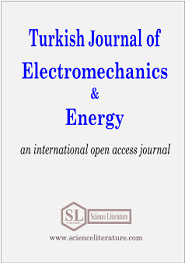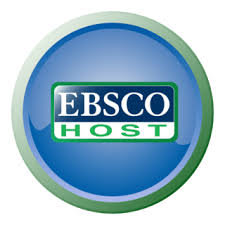
LEED certification analysis for an existing building: Credit opportunities and recommendations
Abstract
The leadership in energy and environmental design (LEED) is a widely adopted green building certification system. LEED certification assesses buildings across five primary categories, which include sustainable site planning, efficient water usage, energy and atmosphere efficiency, material and resource utilization, and indoor air quality. Based on the results of this assessment, buildings that accumulate sufficient points across these categories can receive LEED certification. It is crucial to reduce resource and energy consumption in the certification process while maintaining building comfort. In the report announced by the U.S. Green Building Council (USGBC), the country with the most LEED certification projects in 2022 is China with 1121 projects, followed by India with 323 projects, and Canada with 248 projects. According to the USGBC 2023 database, a total of 1249 buildings in Turkey have received LEED certification. This paper focuses on the evaluation of an existing office building within the framework of LEED certification and calculating its LEED score. The building has been assessed against the stipulated criteria, and recommendations have been provided to facilitate the attainment of LEED certification. According to the studies carried out, it has been calculated that the existing office building can achieve a total of 47 points according to the LEED V4.1: operations and maintenance (O+M) version and can obtain a LEED certificate with this score. If the possibilities and suggestions are examined, it is assumed to be possible to increase the current score by 12 points.
Full Text:
PDFReferences
S. A. Khan, T. Alam, M. S. Khan, P. Blecich, M. A. Kamal, N. K. Gupta, A.S. Yadav, “Life cycle assessment of embodied carbon in buildings: Background, approaches and advancements,” Buildings, vol. 12(11), pp. 1944, Nov. 2022.
R. Sultana, A. Rashedi, T. Khanam, B. Jeong, H. Hosseinzadeh-Bandbafha, M. Hussain, “Life cycle environmental sustainability and energy assessment of timber wall construction: A Comprehensive overview,” Sustainability, vol. 14(7), pp. 4161, Mar. 2022.
M. Michael, L. Zhang, X. Xia, “An optimal model for a building retrofit with LEED standard as reference protocol,” Energy and Buildings, vol. 139, pp. 22-30, Mar. 2017.
G. Fuertes and S. Schiavon, “Plug load energy analysis: The role of plug loads in LEED certification and energy modeling,” Energy and Buildings, vol. 76, pp. 328-335, June 2014.
U.S. Green Building Council, USGBC, LEED Rating System, https://www.usgbc.org/leed
L. O. Uğur, N. Leblebici, “An examination of the LEED green building certification system in terms of construction costs,” Renewable and Sustainable Energy Reviews, vol. 81(1), pp. 1476-1483, Jan. 2018.
S. Altomonte and S. Schiavon, “Occupant satisfaction in LEED and non-LEED certified buildings,” Building and Environment, vol. 68, pp. 66-76, Oct. 2013.
İ. H. Orhan, L.G. Kaya, “LEED belgeli yeşil binalar ve iç mekan kalitesinin incelenmesi,” Mehmet Akif Ersoy Üniversitesi Fen Bilimleri Enstitüsü Dergisi, vol 7(special 1), pp. 18-28, Aug. 2016.
Y. K. Kim and H. Altan, "Analysis of energy reduction through HVAC commissioning: A case study of a LEED certified new building," in 2018 5th International Conference on Renewable Energy: Generation and Applications, ICREGA 2018, 25-28 Feb. 2018, Al Ain, United Arab Emirates, pp. 216-219, doi: 10.1109/ICREGA.2018.8337604.
J. J. Cardenas, G. Gallego, A. Escobar, A. Trejos and M. Pérez, "Diagnostic methodology based on LEED system for energy and environmental evaluation of healthcare facilities," in Proc. of the 2013 Pan American Health Care Exchanges, PAHCE 2013, 29 April - 04 May 2013 Medellin, Colombia, pp. 1-1, doi: 10.1109/PAHCE.2013.6568235.
M. S. Rashwan and M. Duhoux, "Benchmarking energy performance for LEED residential homes in Manitoba," in Proc. of the 2015 IEEE Electrical Power and Energy Conference, EPEC 2015, 26-28 Oct. 2015, London, ON, Canada, pp. 87-92, doi: 10.1109/EPEC.2015.7379932.
C. Yaman, “İdeal bir LEED Sertifika Süreci Nasıl Olmalıdır?,” 28 Dec 2010. [Online] https://www.yesilbinadergisi.com/yayin/dosya/1861/ [Accessed 31.03.2019]
https://www.google.com/maps/place/Metrocity+%C4%B0%C5%9E+MERKEZ%C4%B0/@41.0761116,29.0097409,3a,85y,90t/data=!3m8!1e2!3m6!1sAF1QipMZXg_qYc5qwpcPrYkFaJ__sQYFlXyQ0EB7Qa2B!2e10!3e12!6shttps:%2F%2Flh5.googleusercontent.com%2Fp%2FAF1QipMZXg_qYc5qwpcPrYkFaJ__sQYFlXyQ0EB7Qa2B%3Dw86-h90-k no!7i640!8i673!4m12!1m6!3m5!1s0x0:0xf46c2150f17f61fe!2sMetrocity!8m2!3d41.0758808!4d29.0122358!3m4!1s0x14cab65cde566bdf:0x92335081f9f77572!8m2!3d41.0759129!4d29.0097957 (Accessed 01.10.2019)
U.S. Green Building Council, “LEED v4.1 operations and maintenance,” Nov 2018. [Online] https://www.usgbc.org/sites/default/files/LEED_v4.1_O_M_Guide_02112018_clean.pdf (Accessed 15.09.2019)
Çevre Dostu Yeşil Binalar Derneği (ÇEDBİK), Kişisel Görüşme, ÇEDBİK Eğitim Dökümanı, Lawrence Berkeley National Laboratory dosyası.
https://www.convertunits.com/from/kWh/to/gallon+[U.S.]+of+automotive+gasoline (Accessed 03.10.2019)
https://www.unitconverters.net/volume/liters-to-gallons.htm (Accessed 03.10.2022)
http://www.endmemo.com/sconvert/m3galus.php (Accessed 05.10.2022)
https://www.epa.gov/energy/greenhouse-gas-equivalencies-calculator) (Accessed 10.10.2022)
H. Bulgurcu, O. Kon, N. İlten, “ Soğutucu akışkanların çevresel etkileri ile ilgili yeni yasal düzenlemeler ve hedefler,” in Proc. of the VIII. Ulusal tesisat mühendisliği kongresi, TESKON 2007, 25–28 Oct. 2007, İzmir, Turkey. http://www1.mmo.org.tr/resimler/dosya_ekler/9173c237fe4429e_ek.pdf [Accessed 16.10.2022]
http://www.linde-gas.com/en/legacy/attachment?files=tcm:Ps17-111483,tcm:s17-111483,tcm:17-111483 (Accessed 17.10.2022)
T. Karakaya, “VFR sistemler, çalışma sistemi tasarım ve uygulama esasları,” http://www1.mmo.org.tr/resimler/dosya_ekler/e2c851bf2827405_ek.pdf?tipi=2&turu=X⊆=5 (Accessed 17.08.2023)
https://www.ckbogazici.com.tr/tr/tuketim-hesaplama (Accessed 20.08.2023)
URN: https://sloi.org/urn:sl:tjoee83299
Copyright (c) 2023 Turkish Journal of Electromechanics and Energy

This work is licensed under a Creative Commons Attribution-NonCommercial 4.0 International License.

 Indexed in:
Indexed in:
















